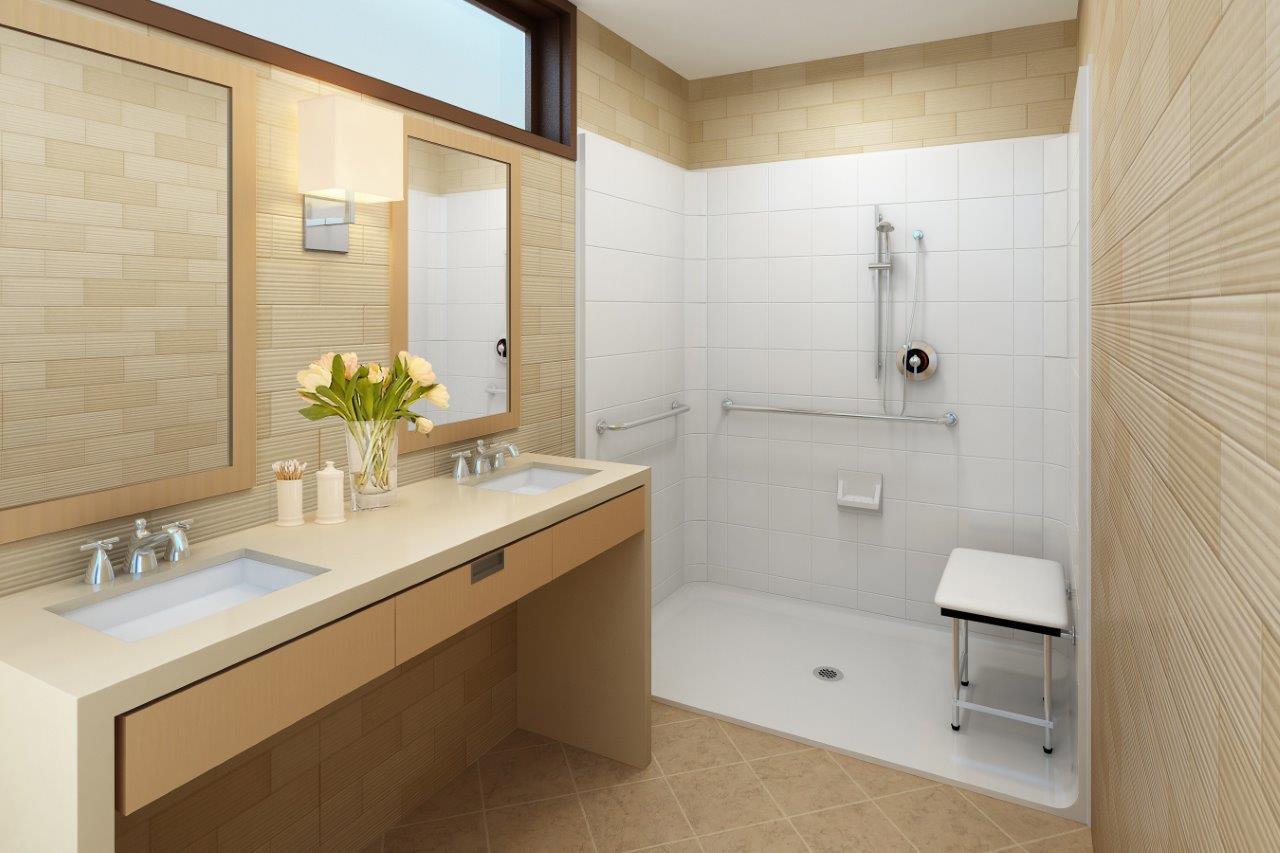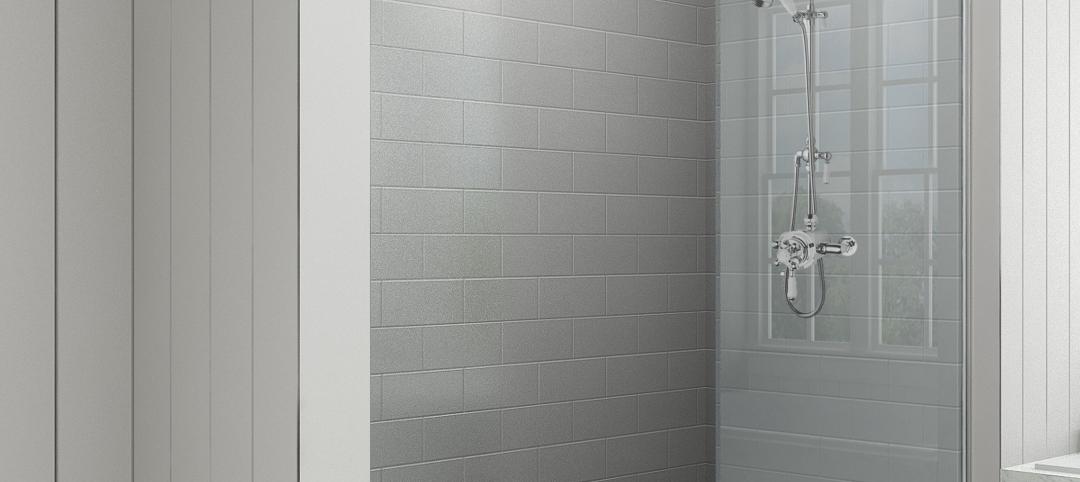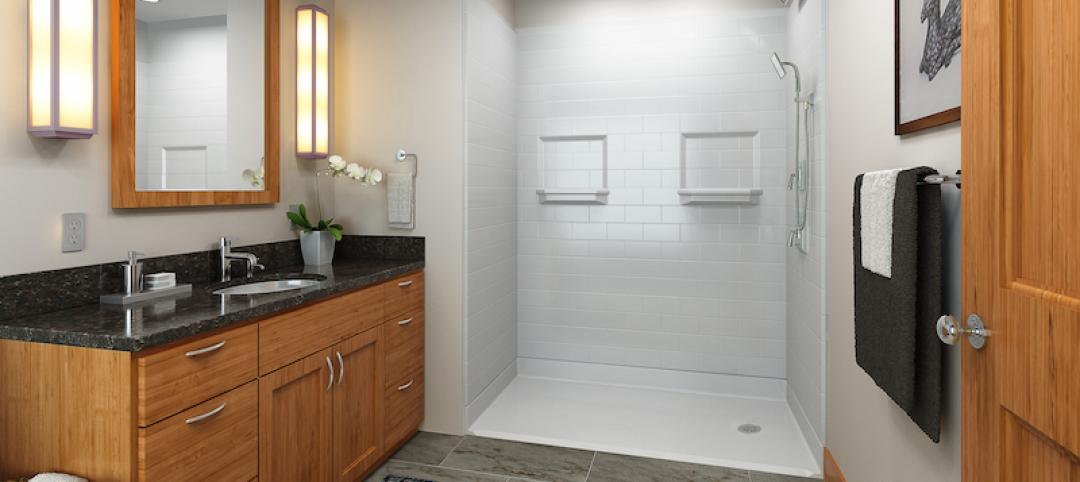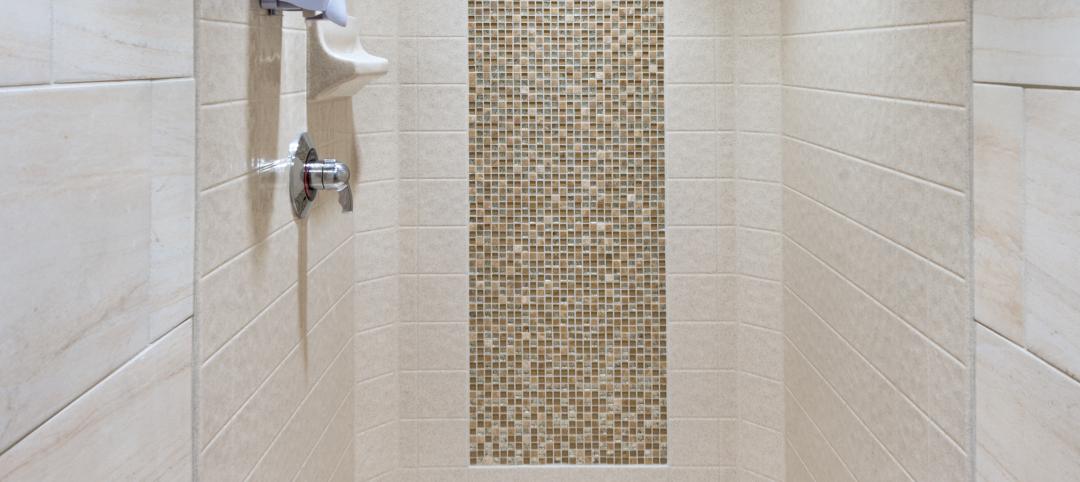The CDC targets the bathroom as the most dangerous room in the house. Every year, about 235,000 people over the age of 15 come to the emergency room with injuries they’ve sustained in the bathroom, and 14 percent of those injuries result in hospitalization. Injuries increase with age, and for all ages the most accident-prone activities were bathing, showering, and getting out of the tub or shower. Architects can use principles of UD to reduce these hazards. Here’s how those principles can play out in the bathroom:
Showers
Showers with low (1/4-inch) or no thresholds reduce tripping hazards. Inside the shower, a wall-mounted seat allows users to comfortably sit to bathe. Trench drains showers offer a modern design with an institutional look. Another good option is installing a composite low-threshold shower. These units can be custom-ordered to fit your space, and there are standard sizes that can be used to replace tub/shower in a remodel. A handheld shower head mounted on a vertical bar means users don’t have to stand underneath a fixed shower head to wash. A combination of both fixed and handheld shower heads accommodates all users.
Grab Bars
Long stainless steel tubes behind and beside toilets in public bathrooms are the one thing that many people think of when ADA- compliant bathrooms are mentioned, but grab bars don’t have to look so institutional—not even in the accessible environment. Today, grab bars are available in many different finishes, including chrome, bronze, and polished nickel.
Grab bar options are growing every day. Manufacturers have incorporated grab bars into soap dishes and shower diverters. These new options allow grab bars to be discretely placed throughout the bathroom.
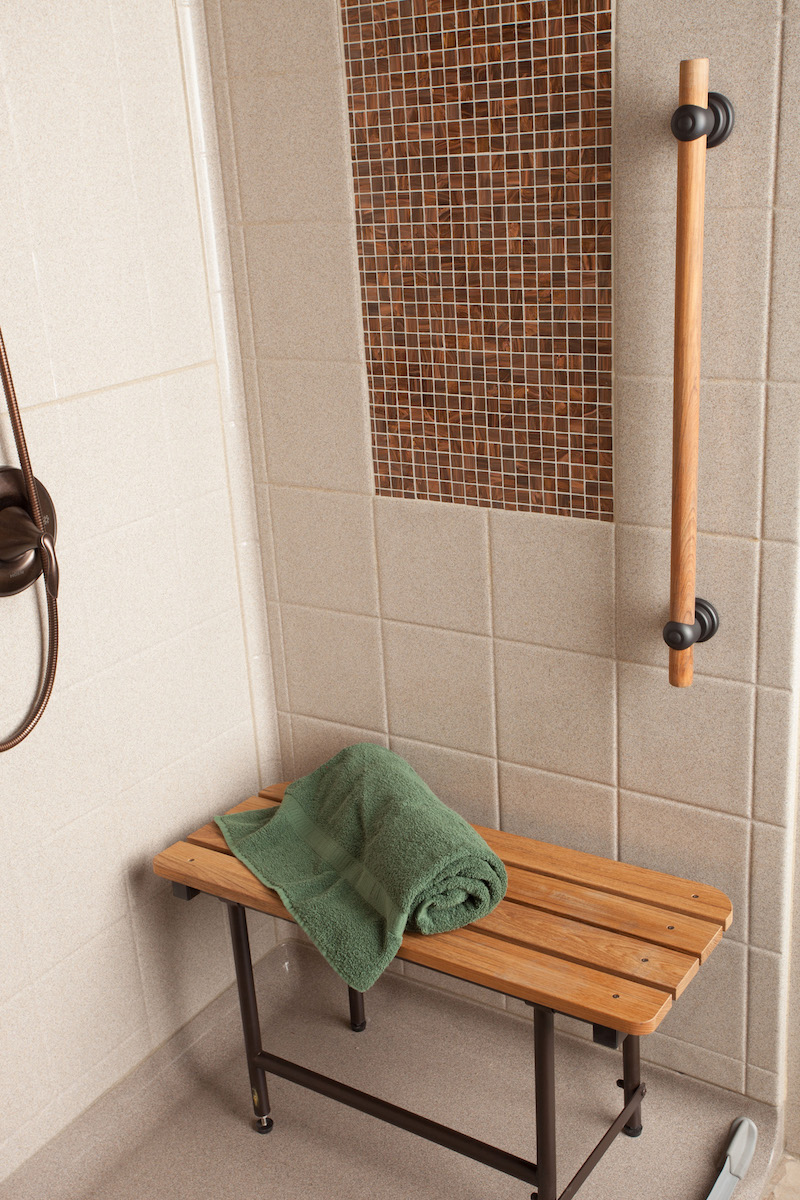
Toilets
The comfort height toilets required for accessibility are a boon to all users. The comfort height appliance rises 17 to 19 inches from the floor, two inches taller than the traditional-height toilet. Those two inches can make a big difference in the ease a user has in rising from the seat, whether the user has a permanent disability or simply aching knees. Comfort height toilets are widely available from manufacturers at a variety of price points.
Wall-hung toilets, where the tank is concealed inside the wall, are also great options for bathrooms. They can be mounted at the optimum height for the user, and offer ease of cleaning since there is no floor mount to trap dirt and dust.
Sinks
An accessible sink calls for knee room beneath it so that a wheelchair user can roll up to the sink and access all the controls to wash up, and there are precise measurements that ensure exactly that under ADA standards. However, always remember that whether we are talking ADA, IBC, or federal Fair Housing design standards, we are dealing with the minimums required to achieve the standard in question.
Exceeding these standards will enhance usability. There is a wide range of possibilities when it comes to sinks that can be used in accessible bathrooms. Wall-hung sinks can be mounted in counters to add landing space, pedestal sinks are excellent where space is at a premium (as they allow access for some users with assistive devices), and there are sinks with vanities that have fold-away doors and incorporate knee space for both seated users, as well as extra storage room.
Clearances
Maneuverability for wheelchair users is the biggest issue in ADA- compliant bathrooms, where a 60-inch turning radius is required, and that means bigger spaces are needed. With careful planning, might be able to use space from another area to fulfill that requirement. For example, the radius needed for a person to transfer from a wheelchair to a toilet can track into the space needed to pull up to the sink. Potentially, part of that five-foot radius can also be borrowed from a roll-in shower.
Do keep in mind that building extra space into a bathroom is a great benefit of universal design because it allows for future flexibility. In the present, that extra space can house a storage piece, a small table, or a floor vase.
Lighting
As our years pile up, our visual acuity plummets. People need three times the amount of lighting at age 60 as they do at age 20. Use a mix of lighting (including natural, overhead, and task) to reduce shadows and make corners of the room visible. Put lighting controls on rocker switches to enable all users, regardless of dexterity issues, for easy handling. And they just look nice too.
Contrasting colors and/or finishes around doorways and at the junction between floor and walls also help users, especially those with vision or cognitive problems, to easily establish where objects begin and end.
For senior housing—whose residents may have anything from the diminished capabilities in vision, strength, and dexterity that normally occur with aging to cognitive difficulties and conditions that require them to use assistive devices—universal design is a no-brainer.
It’s also smart design for student accommodations. A whopping 80 percent of college students live off-campus in modernized student housing communities. A survey by Houston-based J. Turner Research for Multifamily Executive magazine found that 76 percent of students desired their own bathroom, and that remained true even if they shared a bedroom.
More from Author
Bill Bridgeman | Jan 17, 2018
Linear drains offer modern look, simplified accessibility
Sleek and streamlined, linear drains, also known as trench drains appeal to designers’ and building occupants’ desire for minimalism. But for project owners, the benefits lie in versatility: easy installation and increased accessibility to provide all current and future residents with safer, more comfortable showers.
Bill Bridgeman | Sep 7, 2017
Universal design principles: Part 1
It is easier than ever today to design commercial projects with accessible spaces that look as good as they perform.
Bill Bridgeman | Aug 4, 2017
Shower threshold height – a better shower from the ground up!
Getting the right threshold height for your code-compliant shower installation is critical. In this blog post, we will consider how shower and shower-pan threshold heights work and why they are important for successfully meeting accessibility code requirements.

